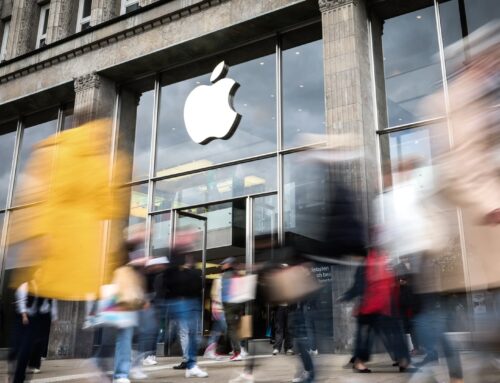Apple is no bellwether for the market
April 27, 2015
It’s the biggest stock in the world, but don’t call it a bellwether. Apple (AAPL) is worth more than any company in history, at more than $750 billion. It is followed by more analysts and showered with more hype than all the Republican presidential contenders combined.
Yet when Apple reports its hotly anticipated results for its fiscal second quarter, the numbers will tell us almost nothing about the state of the economy, and its stock reaction will deliver no clues about the broad market’s prospects. That’s because the Apple economy is a singular thing, operating within the global market for goods and services but only marginally dependent on them.
And Apple shares have shown a stark tendency to remain out of step with the stock market as a whole. Which means that when the company reports what are almost certain to be powerfully strong profits after the close today, it won’t tell us much at all about the condition of the tech industry or the rest of the business world.
Consider what happened exactly a year ago. Apple’s results sped past forecasts and the stock popped 8.2% the next day. It was up more than 13% three weeks later – yet the S&P 500 (^GSPC) was lower by that point than it was the night of Apple’s stunning results.
This wasn’t an aberration: In 2013, the best year for the broad market in decades, the S&P 500 levitated by nearly 30%, while Apple was a profound laggard, climbing just 8%. That’s because the prior year, Apple had built up a huge advantage over the market, vaulting 32% while the benchmark rose 13%.
It’s too much to say that Apple is the anti-bellwether, deviating from the broad tape in perverse fashion. But investors who like to extrapolate broader conclusions from the numbers coming out of Cupertino certainly need to “think different.” If Apple can’t serve as a proper lodestar for investors trying to navigate the opposing currents of this market, then what can?
The week dawns with the Nasdaq (^IXIC) and S&P 500 at new highs, though only by the slimmest of margins. It’s as if the buyers near Friday’s close didn’t want to waste even a nickel in pushing the S&P to a fresh record. The upward trend has remained unquestionably intact, yet its energy level has failed to impress.
Momentum indicators are spongy. Important sectors such as transportation stocks have been conspicuous laggards. Yet quietly, the lesser-known New York Stock Exchange Composite index (^NYA) – a broad list of stocks of all sizes – has nudged to its first new high since mid-2014.
Does this mean that a months-long sideways stall in the “average stock” might be giving way to a more energetic run? It’s not an easy call, given that this diffident market has often paused and waffled once a new high has been tagged.
Yet one encouraging sign for the bulls is that trader and investor sentiment is far from giddy even as nominal new highs are in the books. The latest Barron’s poll of investment managers showed that half described themselves as “neutral” on the market through yearend, the highest tally of noncommittal pros since 2005.
Shorter-term traders, too, lack enthusiasm. Only 39% of those in the Daily Sentiment Index are bullish on the S&P, which doesn’t raise alarms about a damaging market top in the offing. It’s hard to get excited about a rally when one of the main arguments favoring the bulls is how few people are excited about the rally. But this is the market we have.
Search
RECENT PRESS RELEASES
Related Post




